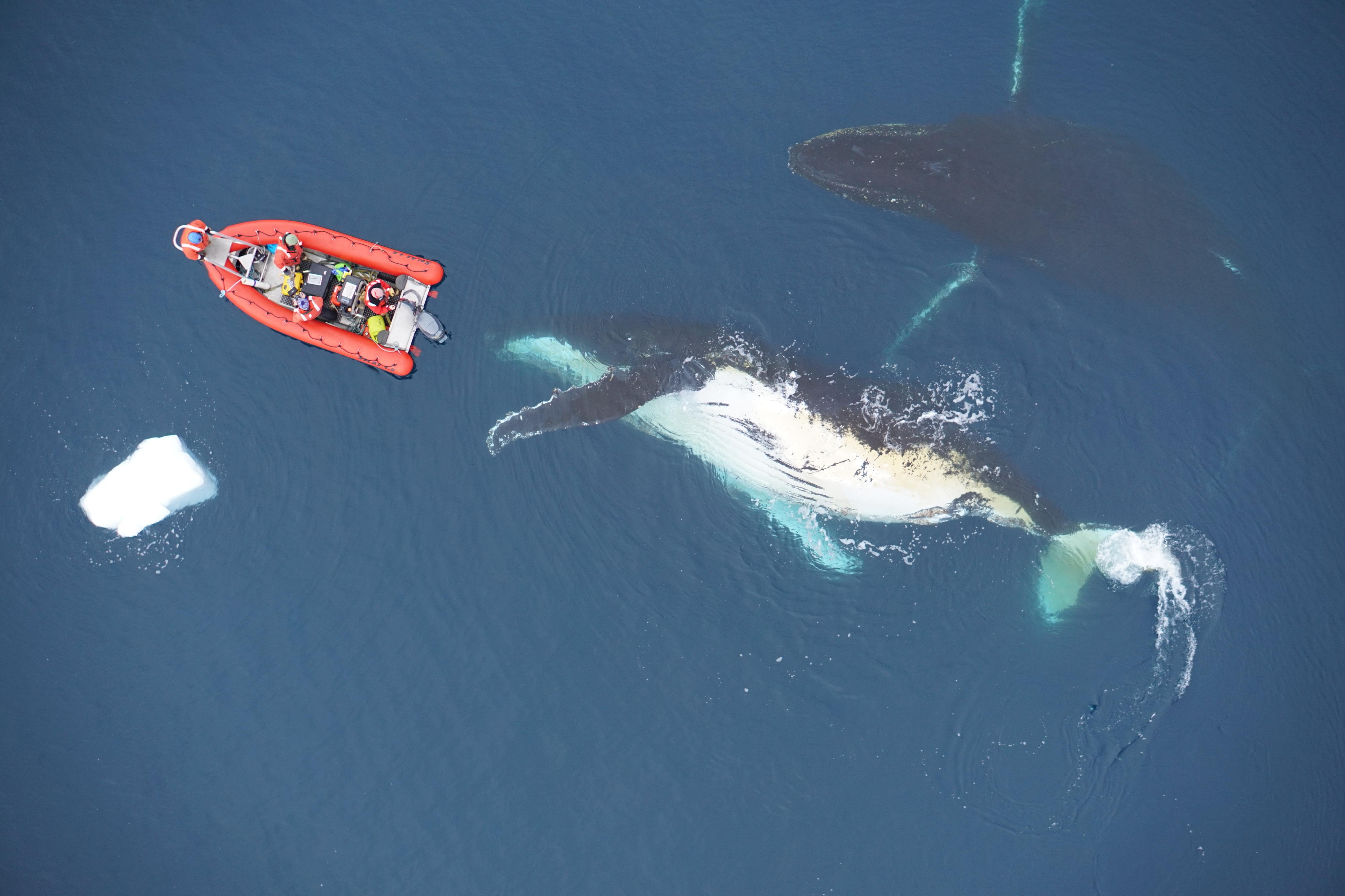Media release
From:
Ecology: World’s largest animals hungrier than previously thought (N&V) *IMAGES*
Baleen whales consume three times more prey than previously estimated, suggests a paper published in Nature. Comparison of prey consumption before and after the onset of whaling in the 20th century provides insights into how the decline of whale populations might have markedly changed ocean ecosystems.
Baleen whales include species such as the humpback whale and the blue whale — the largest animals to have lived on Earth. They consume vast amounts of prey and contribute to nutrient recycling via the excretion of undigested food. Estimations of prey consumption can provide insight into their role in ecosystems, both past and present. However, these estimations — previously made using metabolic models or by analysing the stomach contents of dead whales — are often based on extrapolated data that have not been validated experimentally.
Matthew Savoca and colleagues measured the feeding rates of 321 baleen whales from seven species in the Atlantic, Pacific and Southern oceans. Daily foraging behaviour and prey consumption were calculated by tracking whale location using tags and combining this data with acoustic measurements of prey density, species-specific estimates of feeding rates and prey consumed per feed. Overall, baleen whales were found to consume three times more prey than previously estimated, equating to a median daily prey consumption of between 5 and 30% of their body mass, across all species and regions studied. For example, populations of blue, fin and humpback whales in the California Current Ecosystem each require more than two million tonnes of krill every year. In the Southern Ocean alone, the authors estimate that these whales consumed 430 million tonnes of Antarctic krill (Euphausia superba) per year before the onset of 20th century whaling — twice the estimated total biomass of this species of krill today. The authors also suggest that larger whale populations prior to 20th-century whaling could have supported higher ocean productivity through enhanced nutrient recycling. Indeed, their findings suggest that in the Southern Ocean, for example, baleen whales recycled 12,000 tonnes of iron per year before whaling, compared to 1,200 tonnes per year today.
The authors conclude that if the recovery of whale populations is encouraged, ecosystem function that was lost in the 20th century could be restored, and ocean productivity enhanced.
Multimedia












 International
International



